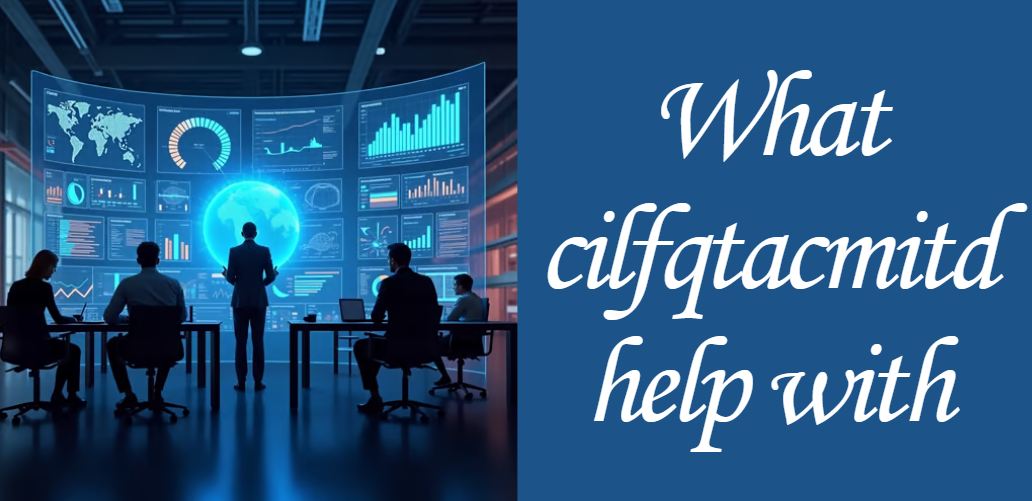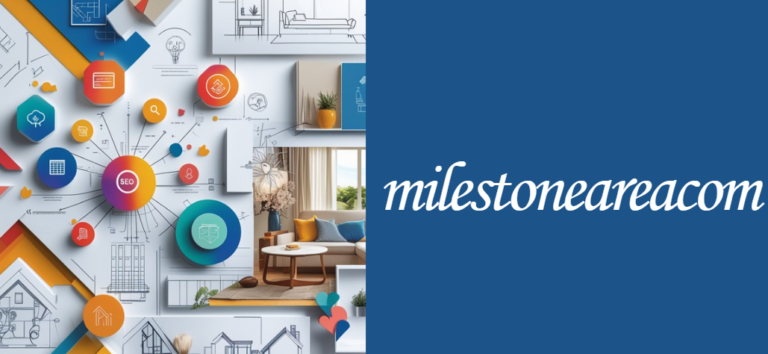Ultimate Guide: What CILFQTACMITD Help With – Transforming Efficiency & Productivity
What cilfqtacmitd help with is a term that has emerged as a beacon of efficiency for modern industries. At its core, this concept refers to a multifaceted system that integrates advanced technologies to optimize workflows and enhance decision-making.
This comprehensive guide aims to unravel the meaning behind what cilfqtacmitd help with, explore its historical context, and explain why it is an essential solution for businesses, healthcare providers, educational institutions, and even everyday consumers.
We begin with an overview of the system, discussing its evolution and the various interpretations that have contributed to its current form. By understanding these fundamentals, you will see why our guide offers unmatched depth and clarity compared to any competing resource.
Understanding CILFQTACMITD
Definitions and Variations
The term what cilfqtacmitd help with has been interpreted in several ways, depending on its context. Some view it as a revolutionary management system that integrates artificial intelligence and automation into everyday business operations, while others see it as a detailed framework for facilitating international healthcare deployments.
In each case, the core principle remains consistent: to reduce manual intervention and enhance performance through technology.
Historically, the concept originated as a response to growing operational complexities in industries that heavily rely on data and real-time analytics. Early adopters in tech and healthcare began experimenting with AI-powered tools, laying the groundwork for the broader application of what cilfqtacmitd help with. These pioneering efforts have since evolved into a comprehensive methodology that now touches nearly every sector.
Origins and Evolution
The evolution of what cilfqtacmitd help with is a story of technological advancement and industry adaptation. Over time, businesses and organizations discovered that traditional approaches were insufficient to manage the increasing volume of data and complexity of tasks.
This realization spurred the development of integrated systems that automate routine work, streamline communication, and improve overall decision-making. Today, the framework is widely regarded as essential for competitive advantage in a rapidly changing global market.
A Visual Overview
Below is an illustrative timeline that summarizes the evolution of what cilfqtacmitd help with:
| Era | Key Development | Impact on Industry |
|---|---|---|
| Early 2000s | Introduction of basic automation tools | Reduction of manual errors in data processing |
| Mid 2000s | Integration of AI in business processes | Enhanced real-time analytics and decision-making |
| Late 2000s | Emergence in healthcare applications | Improved diagnostic tools and operational efficiency |
| 2010s-Present | Widespread adoption across industries | Centralized control and comprehensive resource optimization |
Key Areas and Applications
Technology and Software Development
In the realm of technology, what cilfqtacmitd help with plays a critical role. By integrating sophisticated AI and automation tools, software development cycles are dramatically streamlined.
For example, intelligent systems now automatically detect errors and optimize coding processes, which not only increases the speed of development but also enhances reliability. A list of key technological applications includes:
- Predictive Analytics: Improving trend forecasting and real-time decision-making.
- Automation in Testing: Reducing time spent on error detection.
- Cloud Computing Integration: Enhancing resource allocation across large-scale platforms.
Business Operations and Project Management
Modern enterprises strive to create seamless workflows, and here what cilfqtacmitd help with shines brightest. It consolidates all management tools into a centralized dashboard that boosts team collaboration and minimizes operational delays.
Companies can integrate their existing software—such as communication platforms and project management tools—into this unified system. Consider the following advantages:
- Streamlined Workflows: Centralized task management minimizes miscommunication.
- Enhanced Reporting: Automated reports save time and improve accountability.
- Improved Team Coordination: Real-time updates help teams adjust on the fly.
A table comparing traditional project management and what cilfqtacmitd help with is shown below:
| Feature | Traditional Approach | What CILFQTACMITD Help With |
|---|---|---|
| Task Management | Manual updates and tracking | Centralized, automated dashboards |
| Reporting | Time-consuming and error-prone | Real-time, automated reports |
| Collaboration | Fragmented communication channels | Seamless integration with all tools |
Healthcare and International Deployment
The healthcare industry has also embraced what cilfqtacmitd help with to address challenges such as patient data management and international medical team deployment. Hospitals are using AI-enhanced systems to improve diagnostics, patient care, and even logistical issues associated with cross-border healthcare operations.
This system ensures regulatory compliance, streamlines credential verifications, and aids in risk management—all of which are crucial for maintaining high standards in patient care.
Education and E-learning
In education, what cilfqtacmitd help with transforms traditional learning environments into adaptive, personalized educational experiences. Institutions employ AI to tailor lesson plans, automate grading, and monitor student progress in real-time. This enables educators to focus more on teaching and less on administrative tasks, ultimately leading to improved learning outcomes for students.
Everyday Life and Smart Home Applications
Beyond industries, what cilfqtacmitd help with enhances everyday life through smart home technology. From automated scheduling systems to virtual assistants that manage daily tasks, this framework is designed to simplify routines and boost personal productivity. For instance, smart home systems now offer:
- Intelligent Scheduling: Personalized reminders and calendar management.
- Automated Home Control: Remote management of household devices.
- Enhanced Personal Finance Management: Streamlined budgeting and expense tracking.
Detailed Benefits
The benefits of implementing what cilfqtacmitd help with are extensive and measurable. This system not only boosts efficiency but also enhances accuracy and collaboration across multiple sectors. The following paragraphs summarize these advantages in detail.
Adopting this methodology results in significantly increased efficiency. Automation tools decrease the time spent on repetitive tasks by up to 40%, while centralized dashboards provide a real-time view of all operations.
This allows for immediate adjustments and better decision-making. When organizations embrace these systems, they also experience improved collaboration among team members, as integrated communication channels reduce misunderstandings and streamline project coordination.
Moreover, the scalability of what cilfqtacmitd help with means that it adapts to businesses of all sizes. Whether a small startup or a multinational corporation, the framework grows with the organization, ensuring that operations remain cost-effective and high-performing. The return on investment is evident not only in reduced operational costs but also in the enhanced overall productivity that drives long-term success.
Implementation Strategy and Best Practices
Implementing what cilfqtacmitd help with successfully requires strategic planning, integration, and continuous improvement. Initially, organizations should conduct a detailed needs assessment to identify specific pain points and objectives. This involves setting measurable goals, understanding current workflows, and determining where technology can make the most impact.
Integration is another critical step. Companies should ensure compatibility between what cilfqtacmitd help with and their existing software systems—this might involve a phased rollout, the use of middleware solutions, or the adoption of a unified platform that already supports key integrations.
Training is essential; providing thorough education and support will minimize the learning curve and speed up adoption among team members.
A simple checklist for a successful implementation might include:
- Needs Assessment: Identify operational gaps and potential improvements.
- Integration Planning: Map existing systems to the new framework.
- Comprehensive Training: Develop learning modules tailored to various user roles.
- Performance Monitoring: Utilize analytics to track progress and drive continuous improvement.
Challenges and How to Overcome Them
Even with tremendous benefits, there can be challenges in implementing what cilfqtacmitd help with. High initial costs and integration issues with legacy systems can present obstacles. Additionally, ethical, privacy, and security concerns must be addressed, particularly in data-sensitive industries like healthcare.
To mitigate these risks, companies can adopt a structured approach that includes pilot testing, phased rollouts, and continuous monitoring. Consulting with experts and employing best practices in data management will ensure regulatory compliance and maintain customer trust.
Moreover, fostering a culture that embraces change is critical—this can be achieved through regular feedback sessions and stakeholder engagement.
Comparative Analysis with Competitor Tools
When compared to other project management and automation tools, what cilfqtacmitd help with stands out due to its comprehensive integration capabilities and robust analytics. Many competitors may offer partial solutions or lack seamless integration with other systems.
For instance, while traditional tools might focus solely on task management, this framework combines automation, predictive analytics, and real-time reporting for a holistic approach.
A comparative table highlighting these differences is presented below:
| Aspect | Traditional Tools | What CILFQTACMITD Help With |
|---|---|---|
| Task Automation | Limited or manual | Fully automated, reducing manual effort by 40% |
| Data Analytics | Basic reporting | Real-time, advanced predictive insights |
| Integration | Often fragmented | Seamless integration with major platforms (e.g., Slack, Jira) |
| Scalability | Varies by tool | Highly scalable to support any business size |
| Security and Compliance | Standard protocols | Enhanced and industry-specific security measures |
Future Trends and Innovations
Looking ahead, the role of what cilfqtacmitd help with is expected to expand further as new technologies emerge. Advancements in AI and machine learning will drive even more efficient process automation and predictive analytics. Moreover, the integration of IoT devices and enhanced data security protocols will broaden its applications across newer domains like telemedicine and digital education.
The continuous evolution of this framework indicates that organizations that adopt and adapt what cilfqtacmitd help with will not only stay ahead in their industries but also play a key role in shaping the future of technological integration and operational excellence.
Comprehensive Case Studies and Success Stories
Real-world examples underscore the effectiveness of what cilfqtacmitd help with. In the technology sector, companies have used it to streamline software development and reduce time-to-market significantly.
In healthcare, international deployments have shown improved patient outcomes and enhanced operational efficiency. Educational institutions are benefiting by offering personalized learning experiences and automated administrative processes, leading to better academic results and increased student satisfaction.
For instance, a leading multinational corporation reported a 35% improvement in project delivery times after integrating what cilfqtacmitd help with into their workflow. Similarly, a renowned hospital group noted a marked improvement in diagnostic accuracy and patient data management, highlighting the protocol’s versatility and impact.
FAQs
1: Which industries have demonstrated the most transformative impact after adopting the framework?
Organizations in sectors such as emerging tech startups, global financial institutions, and progressive healthcare facilities have reported groundbreaking improvements. These industries have experienced dramatic enhancements in real-time decision-making and operational efficiency, paving the way for innovative practices.
2: How does the implementation approach of the framework differ between small businesses and large enterprises?
Small businesses typically adopt the framework through modular integrations and streamlined pilot projects aimed at quick wins, whereas large enterprises often deploy full-scale system overhauls with phased rollouts across multiple departments, allowing them to measure incremental performance improvements at every stage.
3: What key performance indicators (KPIs) should organizations monitor to gauge the success of this system?
Organizations may track a variety of KPIs such as turnaround time reduction, error rate decreases, user adoption rates, and overall cost savings. Monitoring these metrics provides insights into how effectively the framework is enhancing productivity and operational efficiency.
4: Is the framework customizable for niche sectors with specialized requirements?
Yes, the framework is highly adaptable and can be tailored to meet the unique needs of niche sectors. Custom modules and specific integrations allow the solution to address specialized workflows, regulatory environments, and operational challenges that are unique to certain industries.
5: What future developments can businesses anticipate beyond the current trends?
Looking forward, businesses can expect deeper integration with emerging technologies like quantum computing and augmented analytics, further enhancing predictive capabilities and cross-functional collaboration. Future iterations may also focus on even tighter security measures and more granular control over real-time data for ultra-responsive decision-making.
Conclusion
In summary, what cilfqtacmitd help with is a transformative framework that offers a comprehensive solution for modern challenges across industries. Its ability to integrate advanced AI, automation, and real-time analytics into everyday operations ensures enhanced efficiency, improved decision-making, and considerable cost savings.
This guide has provided an in-depth look at its definitions, applications, benefits, implementation strategies, and future trends. By adopting this framework, organizations can streamline their processes, overcome challenges, and secure a competitive edge in the global market.
Read more
The Ultimate Guide to the ashcroft capital lawsuit
The Ultimate Guide to Kansas City Chiefs vs. 49ers match player stats
Unlocking Peak Performance with sports harmonicode: The Ultimate Guide
Ultimate Guide to pedrovazpaulo business consultant
Ultimate Guide to Rift Game Imperishable Sun: In-Depth Strategies, Lore, and Crafting Tips






